
Hypobapta diffundens, the diffundens grey, is a moth of the family Geometridae first described by Thomas Pennington Lucas in 1891. It is found in the Australian state of Queensland.
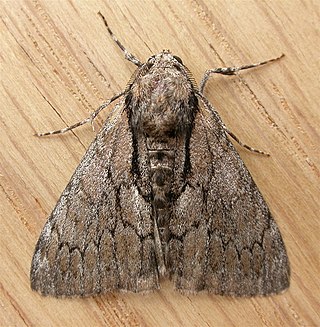
Rhuma argyraspis is a moth of the family Geometridae first described by Oswald Bertram Lower in 1893. It is found in Australia, including Queensland.

Amelora is a genus of Lepidoptera moths in the family geometrid moths (geometridae) that reside in Australia. The Encyclopedia of Life (EOL) has identified four of its key attributes: bilateral symmetry, biting-chewing mouthparts acting as its feeding structure, having a holometabolous developmental mode, and being multicellular.

Hypobapta is a genus of moths in the family Geometridae described by Prout in 1912.

Niceteria is a monotypic moth genus in the family Geometridae erected by Alfred Jefferis Turner in 1929. Its only species, Niceteria macrocosma, the showy geometrid, is found in Australia. It was first described by Oswald Bertram Lower in 1899.

Sterrhinae is a large subfamily of geometer moths with some 3,000 described species, with more than half belonging to the taxonomically difficult, very diverse genera, Idaea and Scopula. This subfamily was described by Edward Meyrick in 1892. They are the most diverse in the tropics with the number of species decreasing with increasing latitude and elevation.
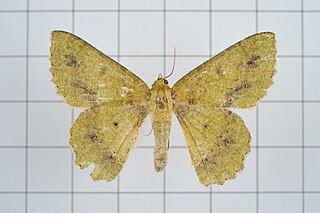
Herochroma cristata is a species of moth of the family Geometridae first described by William Warren in 1905. It is found in China, Japan, Taiwan, Northeast India, Bhutan, Nepal, Thailand, northern Vietnam, and Indonesia.
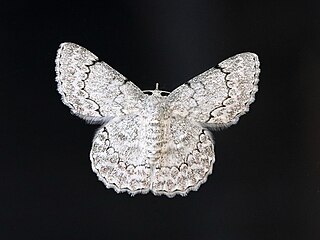
Pingasa chlora, the white looper moth or flower-eating caterpillar, is a species of moth of the family Geometridae first described by Caspar Stoll in 1782. It is found in Sundaland, the Philippines, Sulawesi and from the Moluccas to Queensland, Australia.
Louis Beethoven Prout (1864–1943) was an English entomologist and musicologist.
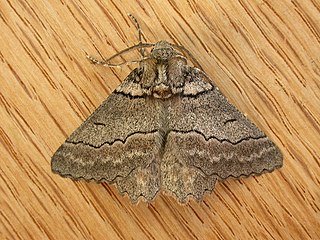
Hypobapta percomptaria, the southern grey, is a moth of the family Geometridae. It was first described by Achille Guenée in 1857. It is known from Australia. The study by Hausmann and colleagues (2009) restrict it to Tasmania; earlier records from the Australian mainland represent Hypobapta tachyhalotaria.
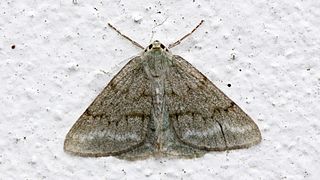
The Pseudoterpnini are a tribe of geometer moths in the subfamily Geometrinae. The tribe was described by Warren in 1893. It was alternatively treated as subtribe Pseudoterpniti by Jeremy Daniel Holloway in 1996.
Scopula argillina is a moth of the family Geometridae. It was described by Oswald Bertram Lower in 1915. It is endemic to Australia.
William Warren was an English entomologist who specialised in Lepidoptera.
Herochroma pseudocristata is a moth of the family Geometridae first described by Hiroshi Inoue in 1999. It is known from the Philippines.

Hypobapta tachyhalotaria is a moth of the family Geometridae. It is found in Tasmania and possibly New South Wales and Queensland.
Protophyta castanea is a moth of the family Geometridae first described by Oswald Bertram Lower in 1898. It is found in New South Wales, Australia.

Bihastina subviridata is a moth in the family Geometridae first described by George Thomas Bethune-Baker in 1915. It is found in Papua New Guinea.
Heterochyta xenomorpha is a moth in the family Xyloryctidae. It was described by Edward Meyrick in 1906. It is found in Australia, where it has been recorded from Western Australia.











